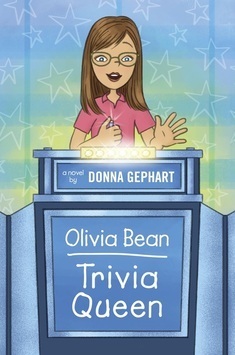Teachers Write 7/8/13 Mini-Lesson Monday with Donna Gephart
Hi there! I hope everyone had a fantastic holiday weekend and is back, ready to write this morning! Today’s guest author is Donne Gephart!
 Donna’s humorous middle grade novels from Random House include: As If Being 12-3/4 Isn’t Bad Enough, My Mother Is Running for President!, How to Survive Middle School and Olivia Bean, Trivia Queen. Her new novel, Death by Toilet Paper, comes out August 2014. Many resources for student and adult writers are available at: http://www.donnagephart.com
Donna’s humorous middle grade novels from Random House include: As If Being 12-3/4 Isn’t Bad Enough, My Mother Is Running for President!, How to Survive Middle School and Olivia Bean, Trivia Queen. Her new novel, Death by Toilet Paper, comes out August 2014. Many resources for student and adult writers are available at: http://www.donnagephart.com
Making Sense of Sensory Writing
Did you know 80% of our brain’s energy is used to process what we see? 80%! If you ever want to rest your brain, close your eyes. (But not while driving!)
While writing, we tend to rely mainly on our sense of sight and ignore our other four senses. We should pay attention to all our senses when writing, especially during the most important scenes – the ones we want to slow down for our readers.
Here are examples of writers using sensory description other than sight:
TOUCH: From Holes by Louis Sachar – During the summer, the daytime temperature hovers around ninety-five degrees in the shade—if you can find any shade. There’s not much shade in a big dry lake.
(Temperature and texture are good ways to use the sense of touch.)
TASTE: From Crystal Allen’s How Lamar’s Bad Prank Won a Bubba-Sized Trophy: . . . to be nice, I take a handful and stuff them in my mouth. Man, these peanuts are off the chain! They’re sweet and salty and remind me of Mom’s snack mix.
She holds the bowl up. “Take some more, baby. Aren’t they good?”
SOUND: From Saint Louis Armstrong Beach by Brenda Woods: Almost like a whisper, I heard someone calling out my name. . . . Then, four times in a row, “Saint, Saint, Saint, Saint,” each time louder, a girl’s voice, until finally she stood right in front of me. “Saint!” she screeched.
SMELL: From Small as an Elephant by Jennifer Richard Jacobson: Clothes dryer – that’s what the tent smelled like: a trapped-heat smell that filled his nostrils and told him the sun was high.
Smells, in particular, are a powerful way to access memories. The scent of your mother’s favorite flower. The odor of your father, after a day’s work. The smell of grandma’s soup bubbling on the stove. The sharp stink of a science experiment gone wrong.
Time to write: Think of a memory triggered by a smell, sound, taste or touch and write about it. Use as many sensory details as you can while writing. Those sensory details will help your readers experience your scene more deeply. Those will help recreate the mood of your memory.
Every time I do this exercise, I’m brought back to my childhood kitchen with my mother cooking at the stove or to our holiday dinners, brimming with aunts, uncles and cousins and smells by the dozens. Someone once wrote about the taste of blood and sweat at his local boxing gym. Another young woman wrote about the smell of her school lunchroom, where as a kindergartener, she was made to sit until she finished her lunch. (She sat through every single lunch period — as every grade from K-8 sat, ate and left — before being allowed to leave, her lunch still uneaten.)
Who knows what YOU will come up with? And who knows where it might lead?
Happy writing trails . . .
Note from Kate: Feel free to share a little of what you wrote today in comments – and remember that even when Gae and I aren’t around to respond, you can cheer one another on with replies!
Need more inspiration? Check out Jo’s Monday Morning Warm-Up.

Today, we’ll be giving away a copy of Donna’s funny book OLIVIA BEAN, TRIVIA QUEEN to one person who replies to someone else’s writing!
.



